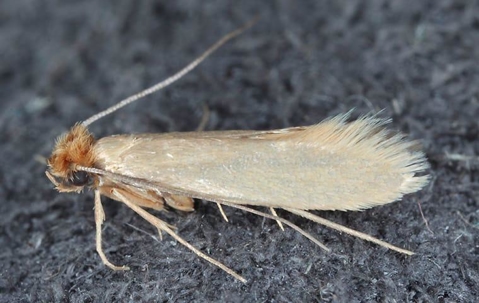With pests, it can be sometimes hard to identify all the ways they can get inside your home or do damage. With clothing moths, especially, the changes in their life cycle mean that they can be difficult to prevent at every stage. Learning everything you can about their habitats and behaviors will help you keep these destructive pests away.
What Do Clothing Moths Look Like?
Clothing moths are actually two different kinds of insects in one species. As larval caterpillars, they look like small, gray worms that eat through animal fibers and blended fabrics. As adults, they look similar to other moths, with papery wings that they use to flutter about. It’s these two very different life stages that make clothing moths so difficult to keep out or remove. While it’s the larvae that do the damage to your clothes, the adult moths are the ones that lay eggs and lead to larger pest infestations. If you only focus on one or the other, you’ll never actually address the root of the problem, not to mention how they got inside to start with. That’s why it’s important to keep up on general pest prevention, so you’re never taken by surprise by holes in your household fabrics.
What Do Clothing Moths Eat?
Clothing moths don’t eat just any kind of linens. They specifically target items that contain keratin, a fibrous animal material found in many types of furniture and clothing. All of the following are targets of clothing moths:
Fur: Even fibers that contain traces of wool or other animal furs can be targeted by moth larvae.
Leather: Animal skins are also a rich source of food for clothing moths, so items that contain leather are often chewed through.
Silk: This material is seemingly the outlier since it’s the only one that comes from insects instead of mammals. However, silk is a favorite target of clothing moths.
Moth Prevention For Your Home
To prevent damage to these kinds of materials around your property, you need to make sure you’re taking steps to reduce your risk of infestation in the first place. Here’s how:
Landscaping: Adult moths look for long grasses or vegetation to land on and rest until they can find nesting areas to lay their eggs. Keeping your yard trimmed will reduce their resting areas.
Doors & Windows: Moths will look for tears in window screens or gaps around a door threshold for any way to fly or crawl inside where food for their larvae is abundant.
Inspections: Frequently inspecting your furniture, closets, and yard for any signs of pests is a good habit to get into. Trained professionals can assist you and make sure nothing gets missed.
Moth Control & Elimination
Because they can pose such different threats depending on how old they are, clothing moths are a pest that can be very difficult for people to try and control on their own. That’s why the best course of action is to partner with pest experts who can keep clothing moths from invading and causing irreparable damage. At Quik-Kill Pest Eliminators, our staff can get started right away on an inspection of your home, making sure that clothing moths aren’t already a problem or that problem areas don’t turn into hotspots for pests. Not only can our inspections help determine your risk of infestation, but they can also help us form a robust pest control plan that’s right for your home. Our services are the best way to keep your linens protected from ravenous clothing moths. So, to save you money in the long run, you should turn directly to the experts for true control.
To get started on true moth control, contact Quik-Kill Pest Eliminators today.

